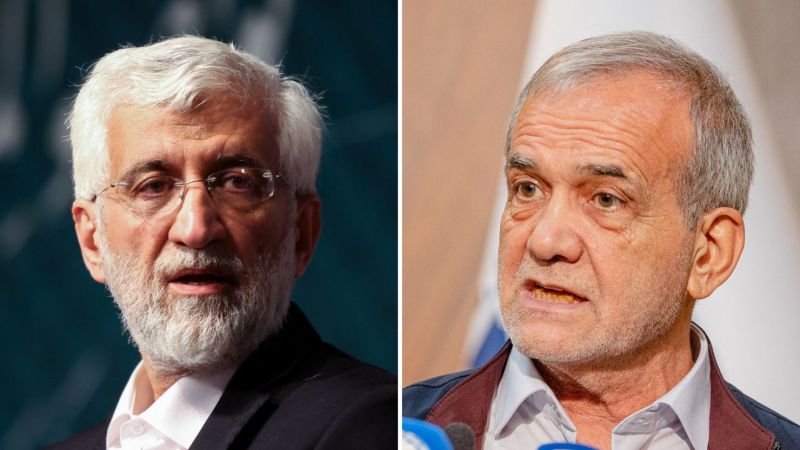Iran will hold a run-off election this Friday, 05 July after hardline candidate Saeed Jalili and reformist Massoud Pezeshkian, both failed to secure 50% plus one vote needed for an outright victory in the presidential race. Pezeshkian led the first round with 42.5% of the vote, followed by Jalili with 38.6%.
At 40%, the turnout was the lowest since the formation of the Islamic Republic in 1979. Supreme leader Ayatollah Ali Khamenei, the ultimate authority in the country, had called for “maximum” turnout. Friday’s election took place to pick a successor to President Ebrahim Raisi who died in a helicopter crash earlier.
A respected analyst said Pezeshkian’s lead reflected a push for “fundamental changes” regarding the economy and relations with the rest of the world. The reformists have urged “constructive relations” with the West to “get Iran out of its isolation.” Iran has been reeling from the economic impact of international sanctions, contributing to soaring inflation, high unemployment, and a record low for the Iranian rial against the US dollar.
Although seen as a reformist, Pezeshkian is deeply loyal to Iran’s supreme leader. Some commentators have suggested that should he be elected, Iran should not expect more than a difference in tone, says BBC.
Jalili is widely recognized for his uncompromising anti-West stance. A former nuclear negotiator and a representative of Khamenei on the Supreme National Security Council, Iran’s highest security body, he appeals to hard-line supporters with the slogan “no compromise, no surrender” to the West. Jalili staunchly opposed the 2015 nuclear deal with the US, which imposed curbs on Iran’s nuclear activity in return for sanctions relief, saying the pact violated Iran’s “red lines” by accepting inspections of nuclear sites. The deal collapsed in 2018.
Two ultraconservatives who dropped out a day before the election have endorsed Jalili.
Irrespective of who is elected, the real authority in Iran vests with the Supreme Leader Ayatollah Ali Khamenei. Most analysts do not expect any major changes in the overall policy direction under the new President.


